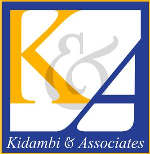H-1B CAP season is upon us once again. It is time to recap and highlight some of things to bear in mind.
- Filing Your H-1B With the Correct Service Center
In October last year, the USCIS made several changes to how certain H-1B petitions were to be filed. Two important changes were made to the filing process:
- Form I-129 should be filed according to the state where the company or organization’s primary office is located. Previously, petitioners filed Form I-129 based on the beneficiary’s temporary employment or training location.
- Petitioners located in Florida, Georgia, North Carolina and Texas will now file Form I-129 at the California Service Center
The USCIS website provides a chart of how petitions should be filed going forward including for CAP cases.
- Changed USCIS Position on Computer Related Occupations
In March last year, the USCIS rescinded prior guidance on computer related occupations; in addition, the Service has now taken the position that several computer occupations like programmer, programmer analyst, systems analyst, etc. are not “specialty occupations”. Therefore, when applying, care should be taken in not only categorizing the occupation correctly, but also in the way the duties of the position are described. The employer must properly explain or distinguish an entry-level position from one that is, for example, more senior, complex, specialized, or unique.
- Prevailing Wages and their Impact on H-1B Adjudication
Beginning in April last year, the USCIS began relentlessly going after positions where the salary was based on a level 1 prevailing wage. This was directly connected to an effort by certain congressmen to raise the minimum wage for H-1B positions to $100,000. It was also an effort by the Service to address the “Putting American Workers First” policy of the current administration. The Service released action items following the President’s “Buy American, Hire American” executive order and has since been issuing RFEs and denying petitions where the salary was equal to a level 1 prevailing wage.
- Random Site Visits and Notices of Intent to Revoke
In October last year, the Office of Inspector General (OIG), reviewed the Service’s ASVVP program and recommended a system overhaul. USCIS accepted the OIG’s recommendations in its entirety. Based on the report, the USCIS will be required to begin enforcing any failed ASVVP visit as grounds for revocation. Employers should clearly indicate where the candidate will be working to ensure a failed site visit situation does not arise.
- VIBE Profile Update
The USCIS requires employers to update and maintain a VIBE profile. Checking the current VIBE profile of the employer to ensure the NAICS code is accurate and the location and other financial information about the Company is up to date is vital to the success of the H-1B CAP petition.
These are just some of the important background information that one must pay attention to prior to filing H-1B CAP cases.
